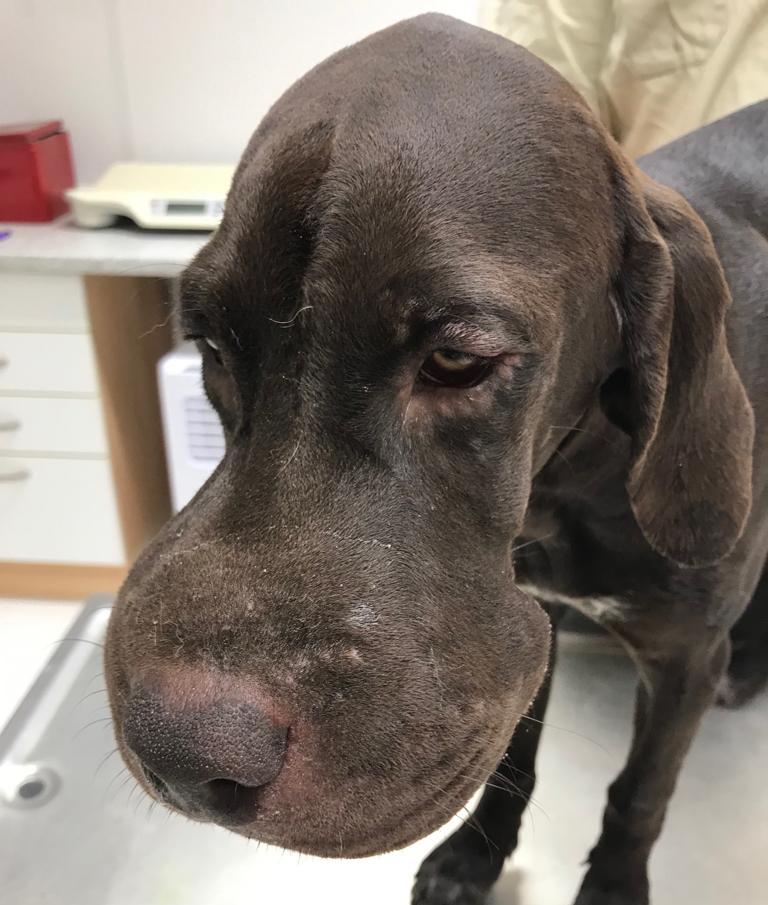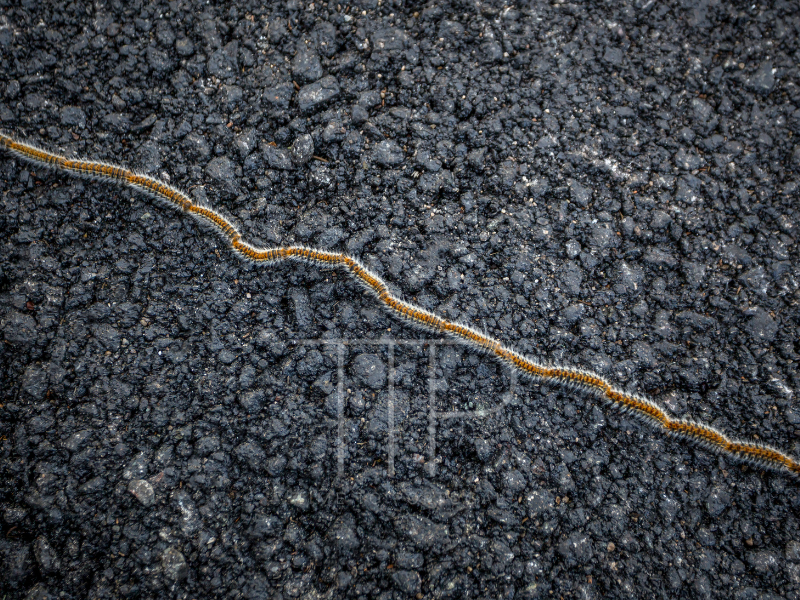Venom of the processionary moth leads to the death of tissue in the oral cavity
The pest is a scale insect (Thaumatopea pytocampa), which is also known as the “pine processionary” due to its peculiar behavior in the caterpillar stage and is widespread throughout the Mediterranean region. Towards the end of the summer, the butterfly leaves the cocoon buried in the ground and the female lays her encapsulated eggs in the needles of pine trees.
After about four weeks, the eggs develop into caterpillars, which go through a further five stages of development before they build the typical nests that look like absorbent cotton balls and contain up to 200 caterpillars.
During this time, the insects leave the nests, to which they are connected by a thread, only briefly to feed (pine needles) in the immediate vicinity. The insects are black and yellow striped, about three centimeters long and covered with tiny brown hairs. A slight rise in temperature in spring – in our case between February and April – provides the biological stimulus for pupation, which takes place in the soil.
All the caterpillars in a nest make their way to the ground, led by a female and connected to each other by a thread. These “processions”, in which up to 200 animals migrate one after the other from their branch in the pine tree to a suitable spot on the ground, have given the insect its name. This natural spectacle is also what attracts the attention of our dogs – or, more rarely, cats.
The danger lurks in the insect’s hairs. These contain a poison (thaumatopein), which causes a severe allergic reaction in the victim on contact with the skin or mucous membrane. In the event of danger, the caterpillars are able to shed their hairs, which break immediately and release their venom.
This peculiarity also explains why damage can occur without caterpillars having been sighted. If there are nests nearby or strong winds at caterpillar time, caterpillar hairs can be blown anywhere in the vicinity of pine forests and cause allergic inflammatory reactions in humans and animals. The affected person develops painful, burning and itchy swellings at the point of contact.

In humans, the skin is usually affected, more rarely the cornea of the eyes. In cats, the entire head can be affected, as the animals often spread the hair all over the face due to their grooming instinct. In dogs, the touching usually takes place in the oral cavity or in the lip area.
The signs of illness depend on the duration and intensity of contact with the poison. Severe swelling, especially of the tongue, can occur within an hour. The animal salivates and is in pain. It is not uncommon for the inflammation to be accompanied by fever, shortness of breath and convulsions.
Such an allergic reaction can even lead to death. More frequently, however, the affected inflamed tissue, especially on the tongue and flews, slowly dies off. Within days or weeks, these animals lose entire sections of skin or tongue. Veterinary treatment should be given quickly to prevent these dramatic consequences. Caterpillar hairs should be rinsed off with warm water as quickly as possible (and never rubbed in).
As a preventative measure, pine forests should be avoided in spring. Walks in windy weather in the wider vicinity of infested pine trees can also be risky. Never disturb or remove a caterpillar procession without appropriate protective clothing. Please ask your local authority about measures to combat the pest on your own property.
Related article: Pine caterpillar! Find out the symptoms of allergies
Visit the website of the Veterinary Center Ferragudo


